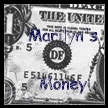Quite a while ago, my blog friend Shelli was asking readers about probiotics and I promised her I'd post about kefir.
What is kefir? Simply put, it's a cultured milk product similar to drinkable yogurt. Not only does it have probiotic bacteria like yogurt, but it also has beneficial yeast. It can be made from cow, goat or sheep milk or from coconut, rice or soy milk. It's a good source of calcium and other vitamins and minerals.
I'm not in any way a nutritionist or biologist, but after reading about kefir, I decided it would be a good thing to add to my diet on a regular or semi-regular basis. The list of ailments or conditions it is believed to remedy is staggering. It's said to help everything from intestinal disorders to sleep disorders to migraine headaches to depression. And that's just the tip of the iceberg. While it's not an overnight cure for anything, it's a safe, easy, tasty and inexpensive way to regulate many systems in the human body.
Plain kefir tastes somewhat like buttermilk or like a thinner version of plain yogurt. It can be used in just about all of the ways you'd use buttermilk or yogurt. If you like the taste, you can drink it plain. Or you can use it in fruit smoothies, in salad dressings, or as a substitute for all or part of the liquid in cakes or breads. I like to use it smoothies for breakfast and as a milk or buttermilk substitute in ranch dressing. The kefir can also be used to culture your next batch.
Making kefir at home can be either complicated or simple. The complicated way is to purchase kefir grains and ferment them yourself, then use the fermented liquid to culture the milk. This is a time consuming process that I probably won't ever try.
The easy way is to buy powdered kefir starter at a health food store.

There are several brands to choose from, although the store you visit probably won't carry more than one or two. I have good results with Yo'gourmet brand. It has enough for 6 quarts of what I call "first generation" kefir, which means it was the initial culture from the powder. (When I culture more kefir from the initial batch, I call them "second generation", "third generation", etc.)
Start with a quart of milk. The package directions call for 2% milk, but I always use whole milk. I have not tried it with any other kind of milk yet.

Heat the quart of milk to 80°F in either a non-stick coated pan or a stainless steel one. (Do not use aluminum or cast iron.) This only takes a couple of minutes over medium-low heat; as you can see, before I was able to snap a photo, it had exceeded the 80° mark. You can also heat the milk in the microwave (in a microwave safe dish), but it's much more difficult to know when it reaches the correct temperature.

Cool the milk back to between 74°F and 77°F. (This can take just as long as it did to warm the milk.)
When the milk has cooled, move about a cup of it back to the measuring bowl. Add the powdered kefir culture. Stir to dissolve. If it remains a little lumpy, don't worry about it. Pour the milk/kefir mixture back into the larger portion of milk. Stir well.

Pour into a plastic quart container with lid. If you're concerned about using plastic, use a quart sized canning jar, but instead of the metal flat, use a piece of plastic wrap for a lid and then use the metal ring to hold the plastic wrap in place.

Move the quart of inoculated milk to a convenient place on your countertop and let it sit there for about 24 hours. Yes, on the countertop at room temperature. Don't worry, the bacteria in it make it safe.
The resulting kefir should have the consistency of buttermilk or thin yogurt.

If it seems lumpy, just give it a good shake. It's now ready to use or to be refrigerated for future use. Use it as a 1:1 replacement for any recipe calling for buttermilk or yogurt. You may also use it in place of regular milk in some recipes. Just use your own judgment and don't be afraid to experiment.
Culturing additional batches of kefir is even easier than making the initial batch. Just take 1 cup of the original quart of kefir and pour it into a clean 1 quart jar or container. Add 3 cups of milk, straight out of the fridge. Mix well and let sit at room temperature for 24 hours. You now have your second generation of kefir! I have cultured kefir up to five generations without much change in flavor or texture. * If you eat it plain, you may find it a little stronger and a little less creamy with each generation, but if you use it for smoothies, dressings and in cooking, you probably won't notice the difference.
To start, I recommend making a batch, consuming three cups of it and culturing the fourth cup for your next batch. If you find you like it and use a lot of it, start using half and culturing half. (This is what I do.) If you find you use a lot of it, use just one cup in recipes and culture the other three. Personally, I can't imagine using that much of it unless you have a very large family.
If you'd like to learn more about kefir, a quick internet search will give you all the information you need. Here are three pages to get you started:
http://www.kefir.net/intro.htm
http://www.rejoiceinlife.com/kefir/riln14.php
http://www.thefamilyhomestead.com/canyousaykefir.htm
*The initial batch of four cups costs about 40¢ a cup. Second and third generations cost even less because the cost of the starter is distributed over more servings. Subsequent generations don't yield as much savings because although the price of starter is less per serving, the cost of the milk remains relatively the same. There is very little savings to be had in going past a fourth or fifth generation, and I suspect the quality of the culture diminishes as well.


















4 comments:
Interesting post, thanks for the info. How long does it keep in the fridge?
SG: I'm not sure how long it will keep. I usually use it fairly quickly, i.e. within 4-5 days per "generation", but I've had some in the fridge for a couple of weeks and it still looked and tasted fine.
SG took my question. LOL
How much do you use in a smoothie?
Shelli: I use 8 ounces just to make it easy to calculate my calcium intake (8 ounces kefir has the same calcium as 8 ounces of milk).
By the time you add fresh, frozen or canned fruit, additional sweetener if necessary, and ice cubes if you want it slushy, it will make 1-1/2 to 2 cups of smoothie.
Feel free to adjust to taste. You can't really go wrong. :)
Post a Comment